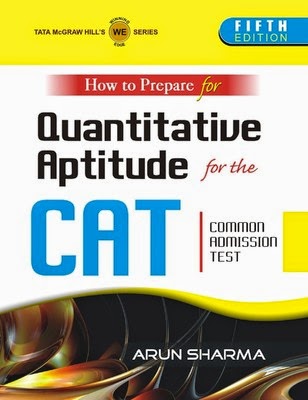Data Interpretation and Logical Reasoning - Arun Sharma
DESCRIPTION :-
The second revised edition of logical reasoning for CAT by well known author Arun Sharma reiterates the importance of reasoning as a subject in CAT and other MBA entrance examinations. It provides clear guidelines on how to successfully tackle the questions asked in this section. A good score in this section considerably eases the pressure on doing well in the verbal ability section.
DESCRIPTION :-
The second revised edition of logical reasoning for CAT by well known author Arun Sharma reiterates the importance of reasoning as a subject in CAT and other MBA entrance examinations. It provides clear guidelines on how to successfully tackle the questions asked in this section. A good score in this section considerably eases the pressure on doing well in the verbal ability section.





